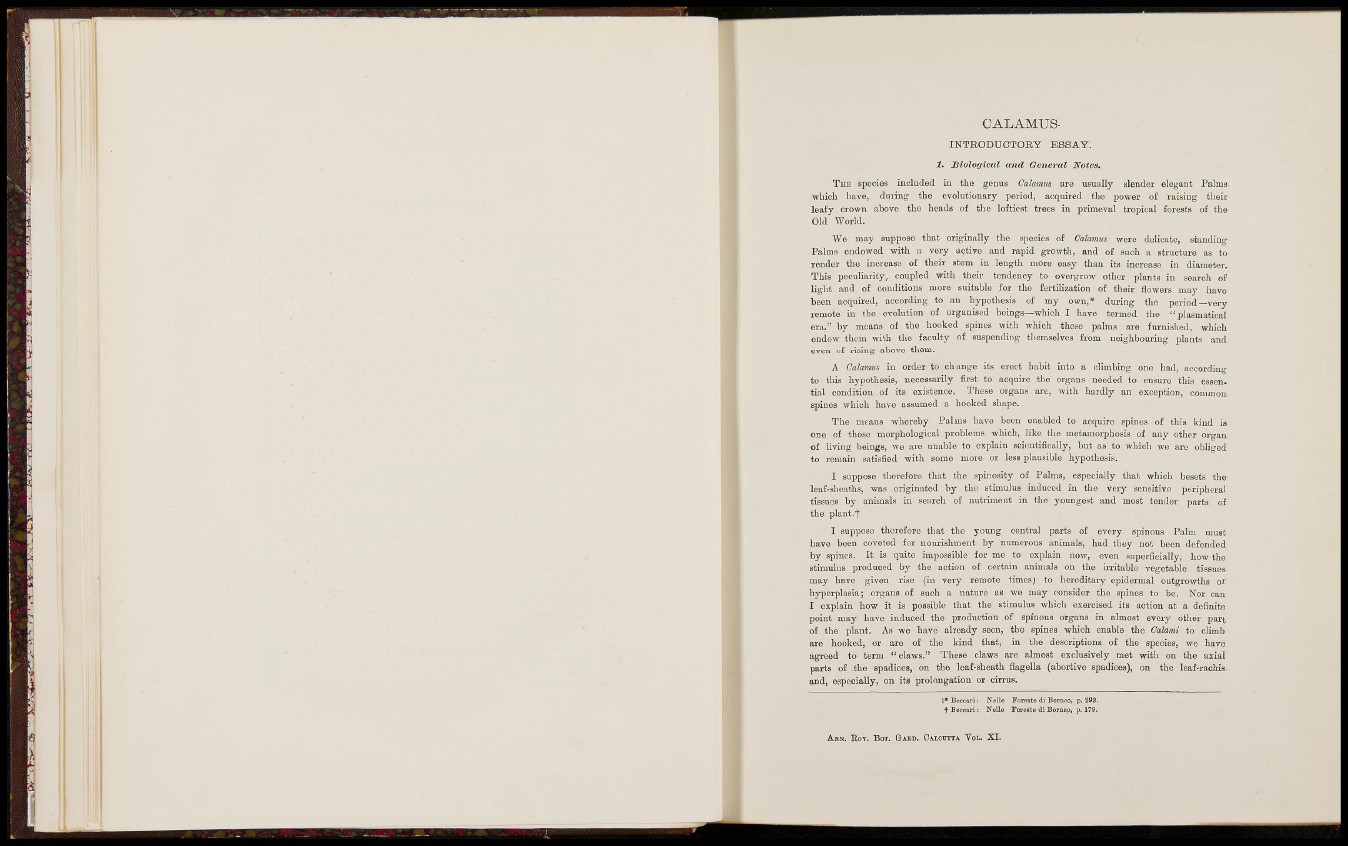
m
CALAMUSINTRODUCTORY
ESSAY.
1. Biolorjical and General Notes.
THE species included in the genus Calamus are usually slender elegant Palms
•which, have, during the evolutionary period, acquired the power of raising their
leafy crown above tho heads of the loftiest trees in primeval tropical forests of the
Old World.
"We maj suppose that originally the species of Calamtis were delicate, sianding
Palms endowed with a very active and rapid growth, and of such a structure as to
render the increase of their stem in lengtli more easy than its increase in diameter.
This peculiarity, coupled with their tendency to overgrow other plants in search of
light and of conditions more suitable for the fertilizatioo of their flowers may have
been acqiiired, according to an hypothesis of my own,* during the period—very
remote in the evolution of organised beings—which I have termed the "plasmatical
era," by means of the hooked spines with which these palms are furnished, which
endow them with the faculty nf suspending tliemselvos from neighbouring plants and
even of rising above them.
A Calamus in order to change its erect habit into a climbing one had, according
to this hypothesis, necessarily first to acquii-e the organs needed to ensure this essential
condition of its existence. These organs are, with hardly an exception, common
1 which have assumed a hooked shape.
The means whereby Palms have been enabled to acquire spines of this kind is
one of tbose morphological probleros which, like the metamorphosis of any other organ
of living beings, we are unable to esplain scientifically, but as to which we are obh'ged
to remain satisfied with some more or less plausible hypothesis.
I suppose therefore that the spinosity of Palms, especially that which besets the
leaf-sheaths, was originated by the stimulus induccd in the very sensitive peripheral
tissues by animals in search of nutriment in the youngest and most tender parts of
the plant-t
I suppose therefore that the young central parts of every spinous Palm must
have been coveted for nourishment by numerous animals, had they not been defended
by spines. It is quite impossible for me to explain now, even sirperficially, how the
stimulus produced by the action of certain animals on the irritable vegetable tissues
may have given rise (in very remote times; to hereditary epidermal outgrowths or
hyperplasia; organs of such a nature as we may consider tho spines to be. Nor can
I explain how it is possible that the stimulus which exercised its action at a definite
point may have induced the production of spinous organs in almost every other part
of the plant. As we have already seen, the spines which enable the Calami to climb
are hooked, or are of the kind that, in the descriptions of the species, we have
agreed to term "claws." These claws are almost exclusively met with on the axial
parts of -the spadices, on the leaf-sheath flagella (abortive spadices), on the leaf-rachis
and, ospocially, on its prolongation or oin-us.
I* Beccari : Nelle Poreste di Borneo, p. 293.
t Beccari : Nelle Foreste d: Bornep, p. 179.
ANN. HOT. BOT. GARD. CALCDTTA YOL. X I .